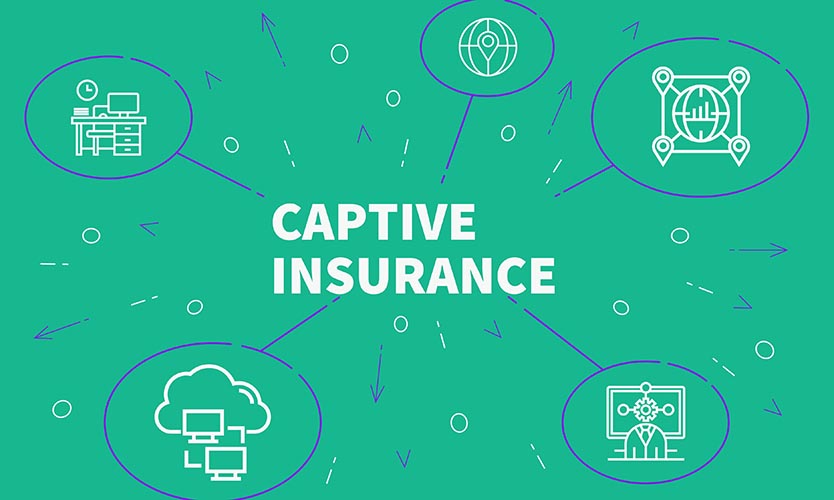Owners make strategic use of AI in captives
- October 7, 2025
- Posted by: Web workers
- Category: Finance

ORLANDO, Florida — Captive owners and managers are already using artificial intelligence to improve efficiency, and the technology will be further used to develop self-insurance vehicles, according to experts.
AI can free insurance professionals to do more advanced analytical work and can be integrated into processes to deliver new captive services, they said.
While technological advances are changing the captive sector, owners still need to address more conventional challenges as they seek to make strategic use of their captives, they said last week during sessions at the World Captive Forum in Orlando, sponsored by Business Insurance.
“You’re going to see more AI and digitization in the captive ecosystem,” said Michael Serricchio, Norwalk, Connecticut-based managing director and Americas consulting leader for Marsh Captive Solutions, a unit of Marsh LLC.
“What that means is not only will there be emerging risks that captives insure, but you’ll also have better systems, better technologies, making lives easier for analytics, actuaries, auditors, accountants and captive managers,” he said.
AI should be used to access information and improve efficiency in captives, said Gabriel Weiss, CEO and co-founder of XN Captive in New York.
“AI is an opportunity to leverage the extraordinary output and knowledge and capabilities of the industry that facilitates captives,” he said.
The introduction of AI into captives is a three-part process. The first stage is the use of familiar AI tools, such as Chat GPT, that people use to make incremental improvements to daily tasks; the second is the introduction of custom-built applications for core processes and systems; and the third is using AI to produce results that are not yet achievable using conventional systems, Mr. Weiss said.
Using AI to do basic tasks frees insurance professionals to do more critical thinking and become more innovative, said Queena Cheung, New York-based chief strategy and digital officer for Marsh Captive Solutions.
“Think about things as little as email proofreading that we have to do day to day,” she said.
But it can also be used to enhance captive services, Ms. Cheung said. For example, last year, Marsh launched ReadyCell, an AI-powered product that allows companies to set up a cell captive in minutes, she said.
In addition, the vast amount of data that AI tools can access allows captive owners to determine their risk tolerance and make other risk management decisions, Ms. Cheung said.
Owners also face varied challenges as they make strategic use of their captives.
Panasonic’s path to establishing a captive in North America faced internal approval challenges due to cultural and legal differences, said Miki Yamanoi, New York-based group manager, risk management, at Panasonic Corp. of America Inc., a unit of Osaka, Japan-based Panasonic Corp.
Panasonic North America is trying to implement a deductible reimbursement program for workers compensation and auto business and a benefits program, she said.
In addition to dealing with coverages different from those in the Japanese market, Ms. Yamanoi and her colleagues had to address cultural issues, such as the fact that few Japanese companies have high self-insured retentions or deductibles.
Working with a strategic broker that understands the company’s culture and approval process is key to overcoming such challenges, Ms. Yamanoi said.
“It’s important to understand your organization, understand who those key champions are going to be across the organization, to help you get things done,” said Michele Cole, director of corporate insurance services at JM Family Enterprises Inc., a diversified auto and home services company based in Deerfield Beach, Florida.
“Now we have our captive up and running, as of 1/1, starting with just medical stop loss and deductibles,” Ms. Cole said. The company is looking to expand the captive’s use to property and other business lines and eventually to sell insurance to its dealerships and franchisees, she said.
Volkswagen AG’s captive, formed in 1991 in Dublin, writes eight lines of business, including marine cargo and property, up from three lines in 2016, said Tibor Boettcher, CEO and executive director at the captive, Volkswagen Insurance Co. DAC.
Since 2014, the captive has received premiums of €1.3 billion ($1.34 billion) and paid out claims of €1.2 billion for its brands, becoming a significant risk transfer mechanism for the group, Mr. Boettcher said.
“Unfortunately, over the last two to three years, we experienced large losses,” he said. These included the total loss of the Felicity Ace cargo ship in 2022. The vessel, carrying high-value cars like Bentleys, Lamborghinis and Porsches from Europe to the U.S., sank after catching fire.
“This was a really large loss, but we, as a captive, really contributed to the direction of the group because we paid out the loss” and showed that having a captive is an advantage, Mr. Boettcher said.



